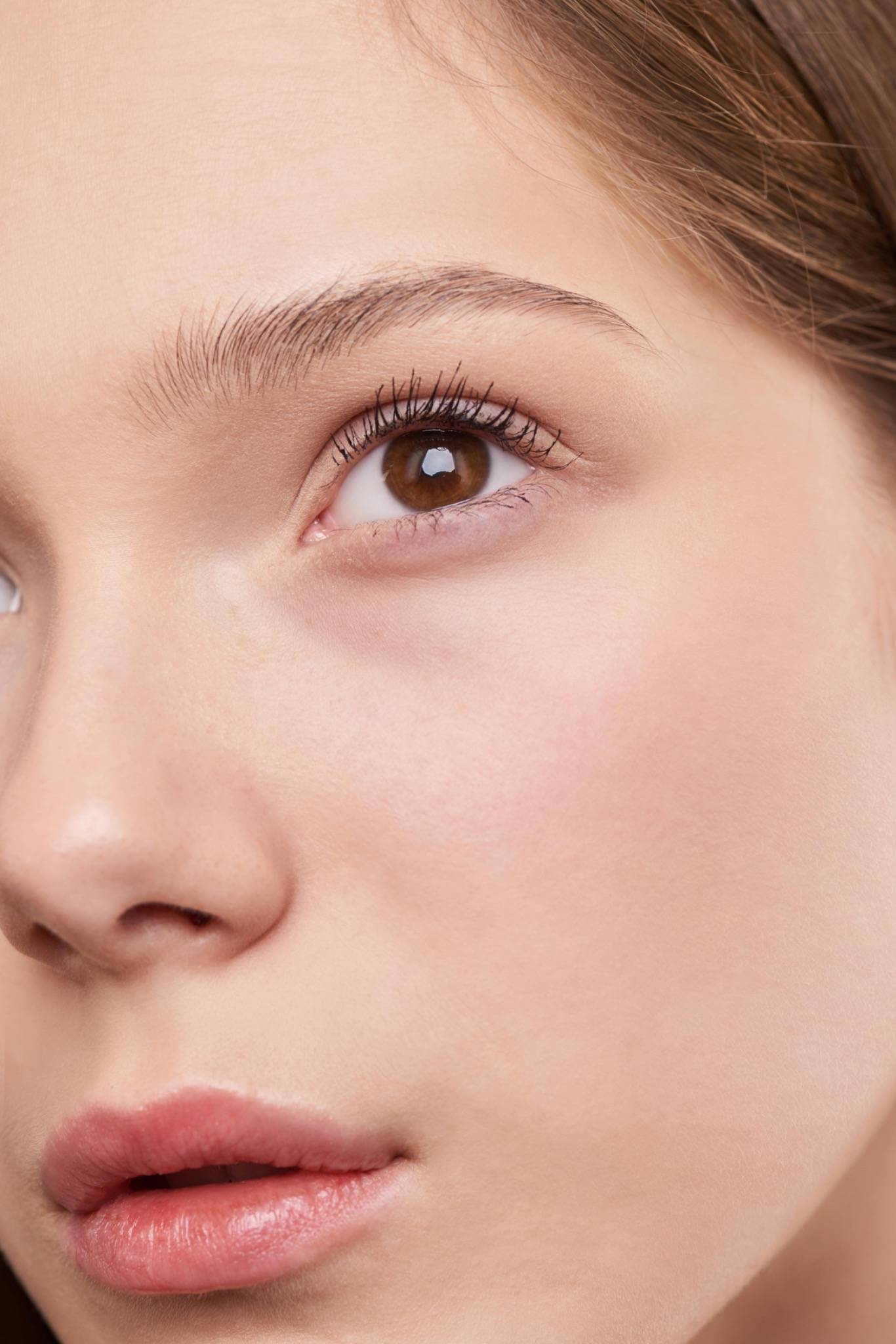Main Content
Introduction
Buccal fat pad reduction is a minimally invasive surgery that removes deep cheek fat to sculpt and define the midface. Adults who feel their cheeks are overly full choose this procedure for a permanent, “chiseled” look—without external scars. At our Sandy Springs center (serving Buckhead and Atlanta), Dr. Carmen Kavali uses precise intraoral techniques and three-dimensional facial analysis to remove just the right amount of fat, enhancing cheek hollowing while preserving overall facial harmony. Patients appreciate this discreet yet impactful enhancement, which rejuvenates their appearance and complements their natural bone structure.
Understanding the Buccal Fat Pad & Facial Anatomy
The buccal fat pad lies deep in the cheek, beneath the buccinator muscle, and is distinct from subcutaneous fat. Key points:
- Infant Function: In newborns and young children, buccal pads aid in suckling.
- Adult Volume: By adulthood, they contribute to midface fullness and cheek roundness.
- Location: Each pad sits within the masseter muscle boundary—from the corner of the mouth toward the ear—and is accessible via the inner cheek.
- Variations: Genetics, aging, and weight changes influence pad size—some individuals retain “puffy” cheeks even at a healthy weight.
Selective removal of buccal fat pads refines the malar (cheek) and jawline regions, creating natural shadows that accentuate facial contours.
What Is Buccal Fat Pad Reduction?
Unlike liposuction or superficial fat removal, this procedure directly excises the encapsulated buccal fat pad:
- Intraoral IncisionA 1–2 cm incision is made inside the cheek lining—hidden from view to prevent any visible scars.
- Fat Pad ExposureBlunt dissection gently separates muscle fibers, revealing the buccal fat pad while safeguarding nearby nerves and ducts.
- Controlled ExcisionUnder direct vision, 2–4 cc of fat is removed per side, based on each patient’s anatomy and goals.
- ClosureThe incision is closed with absorbable sutures. Patients follow an oral-hygiene protocol to keep the site clean during healing.
Because buccal fat pads do not regenerate after removal, results are permanent. Postoperative swelling subsides over four to eight weeks, revealing a more defined midface.
Key Benefits
- Enhanced Cheek Definition: Deeper shadows beneath the cheekbones create a slimmer appearance.
- Permanent Results: Removed fat pads do not return.
- Scarless Outcome: All work is performed inside the mouth—no external scars.
- Quick Recovery: Most patients resume normal activities within one week.
- Customizable Volume Reduction: Precise control prevents over-hollowing and maintains a youthful look.
Who Is a Candidate?
Ideal candidates in Sandy Springs, Buckhead, and Atlanta include those who are:
- Adults (18+): Facial growth should be complete before reducing buccal fat pads.
- Persistent Midface Fullness: Cheek fullness remains despite diet and exercise.
- Good Overall Health: No bleeding disorders, uncontrolled medical conditions, or active oral infections.
- Realistic Expectations: Buccal reduction refines midface contours rather than radically transforming one’s look.
- Non-Smokers: Willing to quit four weeks before and after surgery to optimize healing.
During your consultation, Dr. Kavali assesses facial balance, skin elasticity, and bite alignment to confirm candidacy and design a personalized fat-removal plan.
Customized Treatment Planning
- Medical & Oral Health ReviewEvaluate systemic health, medications, and oral/dental status.
- Facial Analysis & PhotographyFront, oblique, and profile photos assess cheek projection and jawline definition.
- Three-Dimensional SimulationDigital imaging previews expected cheek contours post-reduction.
- Technique & Anesthesia SelectionDecide between local anesthesia with sedation or general anesthesia, incision placement, and fat-volume removal.
- Combination StrategyDiscuss pairing with chin augmentation, neck liposuction, or skin-tightening treatments for balanced rejuvenation.
This comprehensive plan aligns surgical objectives with aesthetic goals, setting clear expectations.
The Procedure in Detail
- Anesthesia & Setup
- Local anesthesia with sedation for most cases (minimal downtime)
- General anesthesia reserved for combined procedures or high-anxiety patients
- Continuous cardiac and oxygen monitoring throughout
- Intraoral Incision
- Positioned approximately 1 cm below Stensen’s duct to protect salivary structures
- Incision length: 1–2 cm, concealed in the cheek mucosa
- Fat Pad Exposure & Excision
- Blunt dissection reveals the pad
- 2–4 cc of fat removed per side under direct vision
- Intraoperative symmetry checks ensure balanced reduction
- Closure & Immediate Care
- Absorbable sutures close the mucosa
- Gentle salt-water rinses maintain cleanliness
- Soft-food diet (soups, yogurts) begins immediately
Estimated Duration: 30–45 minutes
Setting: Outpatient—same-day discharge with a companion
Preparing for Your Procedure
- Medical Clearance: Routine labs; ECG if over 40 or with risk factors
- Medication Adjustments: Discontinue aspirin, NSAIDs, and certain supplements 10–14 days prior
- Lifestyle Changes:
- Stop smoking and vaping four weeks before and after
- Avoid alcohol one week pre- and post-operation
- Logistics:
- Arrange transportation home and 24–48 hours of rest
- Stock soft foods, salt-water rinse solution, and create a comfortable recovery area
Adhering to these guidelines minimizes risks and supports efficient healing.
Recovery & Aftercare Guidelines
Days 1–3
- Peak swelling and bruising at 48–72 hours, managed with cold compresses
- Soft or liquid diet; avoid straws, nuts, and crunchy foods
- Salt-water rinses after meals to prevent infection
Days 4–7
- Continued reduction in swelling; gentle cheek massage if recommended
- No suture removal needed (absorbable stitches)
- Light walking encouraged; avoid bending and heavy lifting
Weeks 2–4
- Final swelling reduction of 80–90% by week two
- Gradual return to a regular diet
- Low-impact exercise at week two; full activity by week four
Months 1–3
- Ongoing contour refinement; final shape by 8–12 weeks
- Follow-up visits at one week, one month, and three months to assess symmetry and satisfaction
Strict adherence to postoperative instructions—including avoiding smoking, staying hydrated, and maintaining oral hygiene—is crucial for optimal results.
Risks & Safety Considerations
When performed by a board-certified facial plastic surgeon, buccal fat pad reduction is low risk. Possible complications include:
- Infection, minimized by sterile technique and antibiotics
- Hematoma or seroma, which may require drainage
- Rare oral structure injury with careful dissection
- Over- or under-correction, with conservative resection allowing minor revisions
- Impact of weight fluctuations on remaining cheek volume
Dr. Kavali’s meticulous technique and strict protocols ensure safety and high patient satisfaction.
Combining with Complementary Procedures
For comprehensive facial balance, buccal fat reduction can be paired with:
- Chin Augmentation to enhance lower-face projection
- Neck Liposuction to refine jawline and neck contour
- Facelift or Midface Lift to lift and reposition sagging tissues
- Skin Tightening treatments (non-surgical or radiofrequency) to improve skin tone post-reduction
Bundled procedures optimize results, reduce total downtime, and deliver cohesive rejuvenation.
Choosing the Right Surgeon & Facility
When selecting buccal fat pad reduction in Sandy Springs, Buckhead, or Atlanta, ensure:
- Board Certification: ABFPRS or equivalent plastic surgery credentials
- Accredited Center: AAAASF, AAAHC, or The Joint Commission accreditation
- Portfolio Review: Before-and-after photos demonstrating natural contours
- Patient Feedback: Consistent praise for skill, empathy, and follow-up care
Dr. Carmen Kavali meets all these standards in a modern, fully accredited Sandy Springs surgical suite.
Lifestyle Impact & Long-Term Maintenance
- Permanence: Removed buccal fat does not return—results remain stable
- Weight Management: Avoid significant fluctuations to preserve cheek definition
- Skin & Health Habits: Daily sunscreen, hydration, and a balanced diet support youthful skin
- Follow-Up Care: Regular check-ins allow early management of any late-onset concerns
Adopting healthy habits ensures the longevity of your newly sculpted contours.
Next Steps: Scheduling Your Consultation
Ready to define your cheeks with buccal fat pad reduction? Contact Monarch Plastic Surgery & Skin Renewal Center:
- Call: 404.250.3333
- Email: info(at)drkavali(dotted)com
- Visit: 6045 Barfield Rd, Suite 100, Atlanta, GA 30328
- Online: Request a Consultation
During your personalized consultation, Dr. Kavali will assess your facial anatomy, discuss goals, and create a clear surgical plan—helping you achieve natural, lasting cheek definition in Sandy Springs, Buckhead, and the Atlanta area.


